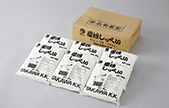Indoor vs outdoor air
Hair pollution is a hot topic for human and environmental health these days, yet according to EPA (United States Environmental Protection Agency), indoor air is on average 2-5 times (or in some cases up to 100 times) more polluted. By some estimates indoor air pollution inside a typical home is responsible for as much as 50% of all illnesses, which is of no surprise as we spend up to 90% of our time indoors and continously breathe indoor air. In fact, the U.S. Environmental Protection Agency (EPA) considers indoor air pollution the number one environmental health problem in the United States.
-

Dust and microbes
For every 100 square meters of living space your home acquires about 12 kg of dust per year. Dust is the primary “vessel” for mites, bacteria, viruses and germs to enter your lungs.
-

VOCs
Everything from cigarette smoke to gas stoves, from naturally occurring radon to chemicals in household cleaners, furniture, paints, etc. creates harmful VOC gases that linger indoors and land in our lungs.
-

Outgassing
Due to the out-gassing of furniture, mold, mildews, mites and fungi in a typical home, a baby crawling on the floor inhales pollutants equivalent to 4 cigarettes every day!
-

Sealed air
For every 100 square meters of living space your home acquires about 12 kg of dust per year. Dust is the primary “vessel” for mites, bacteria, viruses and germs to enter your lungs.
VOCs gases
VOC (volatile organic compounds) are harmful gases emitted by a wide range of chemicals and solid objects produced with those chemicals, cooking, smoking, etc. Let’s look closer at typical VOC sources at home.
Common examples of VOCs that may be present in our daily lives are: formaldehyde, benzene, ethylene glycol, methylene chloride, tetrachloroethylene, toluene, xylene and 1,3-butadiene.

Health effects of VOCs exposure
The risk of health effects from inhaling any chemical depends on how much is in the air, how long and how often a person breathes it in.
Breathing in low levels of VOCs for long periods of time may increase some people’s risk of health problems. Several studies suggest that exposure to VOCs may make symptoms worse for people with asthma or who are particularly sensitive to chemicals. These are much different exposures than occupational exposures.
It is important to remember that VOCs refer to a group of chemicals. Each chemical has its own toxicity and potential for causing different health effects.
Common symptoms of exposure to HIGH levels of VOCs include:
-
Acute/short term exposures(hours to days)
- ・Eye, nose & throat irritation
- ・Headaches
- ・Nausea/vomiting
- ・Dizziness
- ・Worsening of asthma symptoms
-
Chronic exposures (years to a lifetime)
- ・Cancer
- ・Liver & kidney damage
- ・Central nervous system damage
Poor air quality can harm anyone regardless of age, but children are more susceptible to particle pollution than adults due to higher minute ventilation (higher intensity breathing) and higher levels of physical activity.













